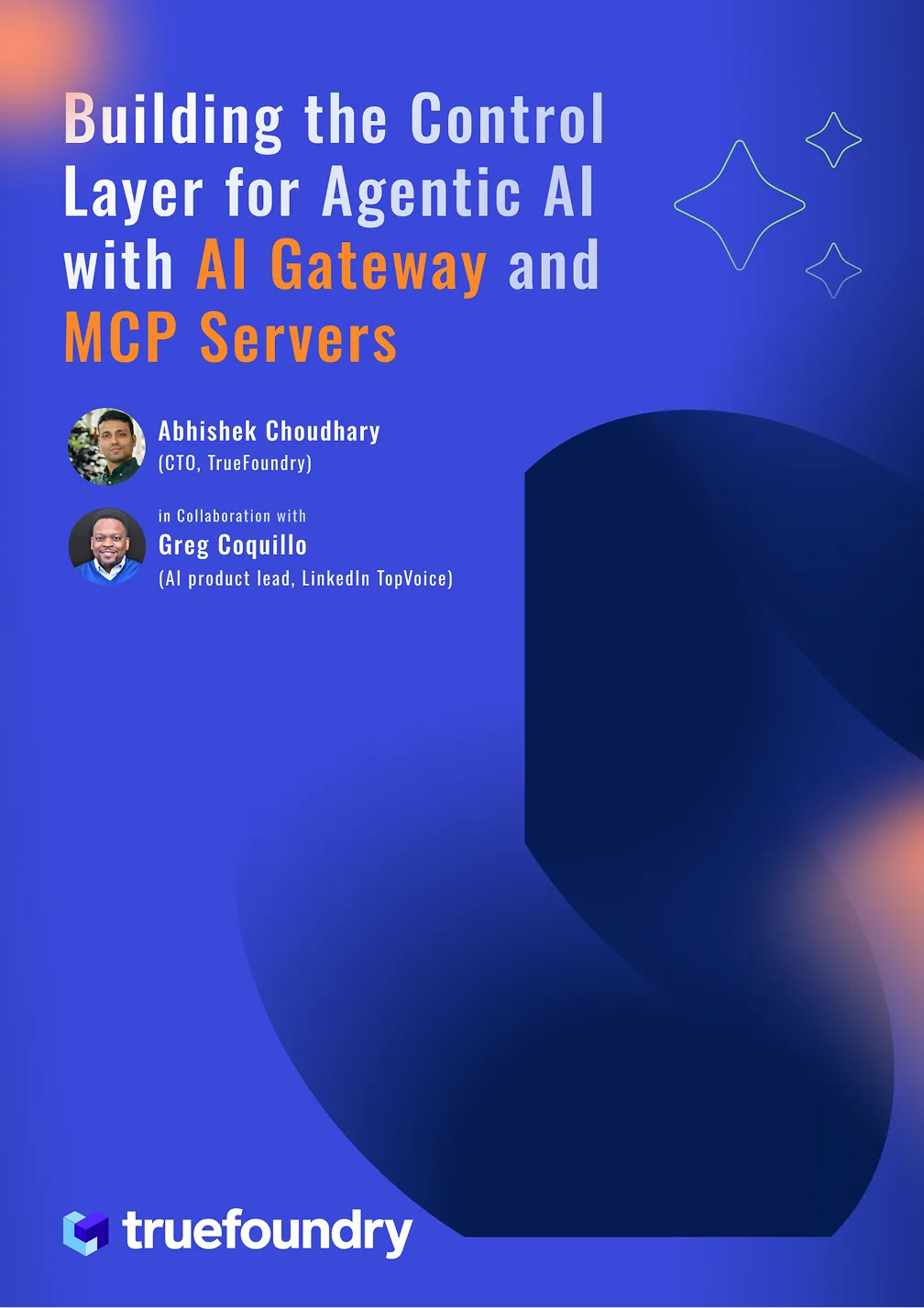Accelerate Data Processing 30–40× with NVIDIA RAPIDS on TrueFoundry
Accelerate Data Processing 30–40× with NVIDIA RAPIDS on TrueFoundry
Today’s enterprise-grade machine learning projects frequently involve processing large-scale datasets, posing challenges for traditional CPU-based frameworks like pandas, which often struggle with performance bottlenecks. NVIDIA RAPIDS offers a revolutionary solution, leveraging GPU parallelism to accelerate data processing dramatically. In this technical deep dive, we'll explore how RAPIDS can boost your data workflows by 30–40× and demonstrate how TrueFoundry simplifies leveraging GPU-accelerated data processing seamlessly.

Introduction to GPU-Accelerated Data Processing with NVIDIA RAPIDS
NVIDIA RAPIDS comprises several key libraries, each designed to accelerate specific aspects of the data science pipeline by leveraging GPU power. The following table provides a brief overview of these core components:
Let us pick up one library most used in enterprises for data engineering
cuDF: GPU-Accelerated DataFrames for Data Preparation
- cuDF serves as a GPU DataFrame library, providing accelerated capabilities for common data manipulation tasks such as loading, joining, aggregating, filtering, and general data transformation.
- Its design offers a pandas-like API, which is highly familiar to data engineers and data scientists, facilitating a smooth transition to GPU-accelerated workflows.
- A notable advancement is the "pandas accelerator mode," enabling GPU acceleration with minimal or "zero code changes" to existing pandas workflows.
But GPUs historically haven’t been the easiest to integrate into data workflows. We talked to data-engineering leads at three enterprises that want to run Rapids in production - a Fortune-500 fintech, an online-learning unicorn, and a well-known Q&A platform—we heard the same refrain: “Every sprint we discover one more job that broke because CUDA 11.8 crept onto a single worker. Twice a month we’re rebuilding our Conda locks.” — Head of Data Platform, FinTech
The Traditional Challenge: Installing and Running RAPIDS
If you’ve ever tried installing RAPIDS on your own machine or a generic cloud instance, you know it can be painful. RAPIDS has specific version dependencies (CUDA toolkit versions, exact Python and library versions, etc.), which means a wrong combination can lead to cryptic errors.
This is doable but far from simple – environment setup can take a long time, and mixing RAPIDS with other Python packages can easily lead to dependency conflicts. In fact, maintaining a requirements.txt for RAPIDS often requires pinning very specific versions of NumPy, pandas, scikit-learn, etc., and mismatches can break your code . All this setup overhead is a barrier if your goal is just to speed up data processing.
Using Google Collab
Google Colab offers RAPIDS integration. Colab's GPU runtimes provide compatible drivers and CUDA versions, eliminating manual setup. While `!pip install rapids-cuda12.0` is still needed, Colab manages dependencies, enabling quick use of GPU-accelerated cuDF and cuML without complex local installations.
However, more often than not enterprise grade machine learning systems require more than just a coding IDE which it fails to provide

GPU-Acceleration Made Easy on TrueFoundry
TrueFoundry addresses these traditional barriers, making RAPIDS easy to use and manage:
Pre-configured GPU Environments: TrueFoundry provides a managed NVIDIA CUDA 12.x toolkit environment. You just need to run this notebook and pip install rapids <cuda version>

On-Demand GPU Provisioning: Easily select GPUs (on spot or demand) directly from the TrueFoundry interface. The platform automatically manages driver installations and dependency configurations.

Docker Integration: Pre-built Docker images with RAPIDS allow immediate access without installation overhead.

TrueFoundry's integrated environment lets data scientists rapidly prototype, develop, and deploy GPU-accelerated pipelines.
Hyperparameter Optimization has been difficult to implement in practical applications because of the resources needed to run so many distinct training jobs. You can also run HPO using Nvidia Rapids as Jobs on Truefoundry.

End-to-End Example: Pandas vs cuDF on ~1 B NYC Taxi rows
Below is the exact notebook we ran on TrueFoundry to find the mean average
import os, time, urllib.request
from pathlib import Path
import pandas as pd
import cudf
import dask_cudf
from dask.distributed import Client
from dask_cuda import LocalCUDACluster
# ----- CONFIG -------
MONTHS = pd.date_range("2018-01-01", "2021-07-01", freq="MS").strftime("%Y-%m").tolist()
DATA_DIR = Path("data") # where Parquet files will live
REPEATS = 3
TS_COL = "tpep_pickup_datetime"
VAL_COL = "total_amount"
BASE_URL = "https://d37ci6vzurychx.cloudfront.net/trip-data/"
Loading the dataset
def ensure_data():
DATA_DIR.mkdir(exist_ok=True)
files = []
for m in MONTHS:
fname = f"yellow_tripdata_{m}.parquet"
out = DATA_DIR/fname
if not out.exists():
url = BASE_URL + fname
print(f"Downloading {fname} …")
urllib.request.urlretrieve(url, out)
files.append(str(out))
return files
files = ensure_data()
print(f"→ {len(files)} files ready (≈{len(files)*23:,} M rows total)")
Defining Pandas workflow
def pandas_workflow(files):
dfs = [pd.read_parquet(f) for f in files]
pdf = pd.concat(dfs, ignore_index=True)
pdf["day"] = pd.to_datetime(pdf[TS_COL]).dt.date
return pdf.groupby("day")[VAL_COL].mean().max()GPU run – Dask + cuDF workflow
# <code:dask-cudf-workflow>
from dask.distributed import Client
from dask_cuda import LocalCUDACluster
import dask_cudf, cudf
def dask_cudf_workflow(files):
cluster = LocalCUDACluster()
client = Client(cluster)
print("▶ Running on", len(client.ncores()), "GPU(s)")
ddf = dask_cudf.read_parquet(files)
ddf["day"] = ddf[TS_COL].dt.floor("D")
# compute group→mean→max across the cluster
result = (
ddf
.groupby("day")[VAL_COL]
.mean()
.max()
.compute()
)
client.close()
cluster.close()
return resultResults

Even on a single GPU we already saw sub-10 s runtimes; adding GPUs with Dask gave near-linear scaling until network saturation.
That’s a 37× productivity boost without changing a single line of business logic. Ready to drop your processing times from minutes to seconds? Spin up a RAPIDS notebook on TrueFoundry and see the difference.
Beyond Speed: Scalability and Production-Ready Workflows
Speed is fantastic, but equally important is how to integrate these GPU workflows into your overall data platform. Here are a few additional benefits of using RAPIDS on TrueFoundry:
- Multi-GPU Scaling – Launch a Dask-cuDF cluster on two or more GPUs with a single Job specification. TrueFoundry provisions the scheduler and workers automatically, delivering near-linear throughput gains on data sets that exceed a single GPU’s memory.
- Seamless Pipeline Promotion – The same notebook code can be promoted to a scheduled batch job or incorporated into a larger workflow through TrueFoundry’s UI. Environment consistency removes “it-works-locally” drift between exploration and production.
- Cost-Conscious GPU Allocation – Request on-demand or spot GPUs, define auto-scaling rules, and mix CPU and GPU stages within one pipeline. Resources are released when idle, ensuring you pay only for the acceleration you use.
- Integrated Observability – Platform dashboards expose GPU utilisation, memory footprint, throughput and error/latency metrics, with alerting hooks for proactive tuning and capacity planning.

In conclusion, TrueFoundry bridges the gap between trying out RAPIDS on your data and deploying it in a robust, scalable manner. You get the best of both worlds: extreme speed-ups from NVIDIA RAPIDS and the reliability and ease-of-use of a managed platform.
Built for Speed: ~10ms Latency, Even Under Load
Blazingly fast way to build, track and deploy your models!
- Handles 350+ RPS on just 1 vCPU — no tuning needed
- Production-ready with full enterprise support
TrueFoundry AI Gateway delivers ~3–4 ms latency, handles 350+ RPS on 1 vCPU, scales horizontally with ease, and is production-ready, while LiteLLM suffers from high latency, struggles beyond moderate RPS, lacks built-in scaling, and is best for light or prototype workloads.









.png)












